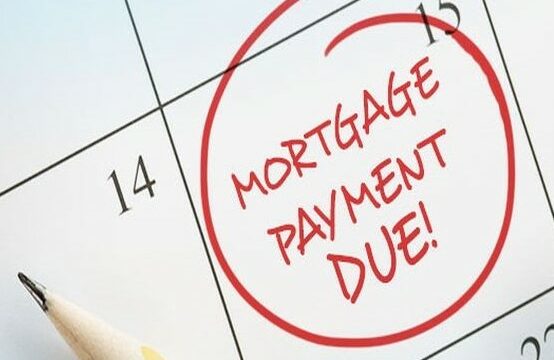
It’s now more than two years since the EU referendum, which was arguably the biggest political event (and some might say the biggest shock result) in Britain this century.
The seismic vote – which saw Leave emerge victorious by 51.9% to Remain’s 48.1% – has had a profound effect on Britain, Europe and the rest of the world as withdrawal proceedings have slowly but surely got underway.
With the country effectively split down the middle, Brexit has continued to be an incredibly fraught issue, with strong opinions on both sides of the debate. But what has the decision to leave the European Union meant for the property market?
A steady footing
- Before the referendum plenty of concerns were aired about property prices falling off a cliff or a property crash of the like not witnessed since the height of the global financial crisisUsed to refer to the 2008 Financial Crisis (or Crash), which is recognised as the worst financial crisis since the 1930's depression. With its origins in the US sub-prime mortgage market in 2007, it counted established industry titans such as Lehman Brothers and Bear Stearns among its casualties, leading to government bailouts of banks around the world and protracted economic downturn. in 2008Used to refer to the 2008 Financial Crisis (or Crash), which is recognised as the worst financial crisis since the 1930's depression. With its origins in the US sub-prime mortgage market in 2007, it counted established industry titans such as Lehman Brothers and Bear Stearns among its casualties, leading to government bailouts of banks around the world and protracted economic downturn., but these worst case scenarios never came true. In fact, quite the opposite has been the case – with the property market, both residential and commercial, largely batting off Brexit fears and uncertainty and taking a business as usual approach.
- Of course, adjustments were needed to cope with the new normal and the ongoing uncertainty has made some dents on prices and confidence – especially in London and the South East – but a disastrous slump and the idea of millions of people falling into negative equityTypically used to describe a situation where the Loan-to-Value is higher than 100%; essentially the loan value is greater than the property value. The term can also be used to describe a situation where a property owner would make a loss on the disposal of a property. Prices could have fallen in between purchase and sale, or prices may have remained flat or marginally increased, but by the time all costs (SDLT, maintenance, refurbishment, etc.) have been accounted for, a loss is made. was unlikely when you consider the current fundamentals of the property market.
- While demand continues to outstrip the supply of homes, as is the case across the whole of the UK, prices falling drastically won’t be happening anytime soon, regardless of what happens next between Westminster and Brussels.
A leading investment class
- Part of the reason for the property market’s robustness in the face of external challenges – the referendum, the snap General Election and global economic uncertainty, etc – has been its status as a leading investment class.
- In times of uncertainty investors gravitate towards safe havens, avenues that are likely to provide securityAn Asset used as Collateral for a Loan. and stability in the short, medium and long-term. For a while now, in fact, property has proved to be a far more reliable bet than more traditional forms of investment such as stocks, shares or bonds.
- The weakness of the pound – a direct consequence of Brexit – has also been to the advantage of overseas investors, who have used the fall in sterling and favourable borrowing conditions to invest money in both commercial and residential propertyA person's main residence, or in the case of Property Development the term used to classify the end product; i.e. I am developing a mixed site of Commercial Property and Residential Property. in the UK.
- Strong investor sentiment was backed up by a survey carried out by Market Financial Solutions (MFS) at the beginning of this year, which revealed that 53% of investors would prefer to direct their money into traditional assetsAn item of property owned by a person or company, that has a value and could be used as Security for a Loan. such as property rather than newer, riskier avenues. It found that 63% of investors see property as a safe and secure assetAn item of property owned by a person or company, that has a value and could be used as Security for a Loan., with the ability to generate and deliver solid long-term returns.
- As a contrast, the UK stock market has been up and down of late (in the first quarter of 2018, for example, the FTSE 100 Index dropped by 8.3%) and has been more affected by Brexit than the property market. Traditional savings, too, are currently hard to get good returns on thanks to very low interest ratesThe proportion of the overall Loan that is charged to the Borrower as Interest by the Lender. This is normally expressed as an annual percentage of the remaining loan. (still held at 0.5%).
Strong price growth
- The continued strength of the property market has perhaps best been shown by the consistent growth in average house prices in the two and a bit years since the Brexit vote. Despite recent price drops in London, the average UK house price stood at more than £226,000 in April 2018, 3.9% more than the year before and 6.6% higher than June 2016 when the referendum took place.
- While this is partly reflective of the supply-demand imbalance, it also highlights the stability offered by the property market and the confidence people place in it. Buyer confidence has remained high despite various challenges.
- There was definitely an impact on transactions before and immediately after the referendum, as people took a while to adjust to the post-Brexit landscape. But transactions soon got going again and have remained fairly consistent since.
- While the rate at which house prices have grown has started to falter in recent months – with supply narrowing the gap on demand in certain areas – prices have still been rising in a steady manner since June 2016. There is also nothing to suggest this will change in the foreseeable future, even if price growth continues to slow.
Private rented sectorUsed as a collective term by the government to classify and private rental properties, however it has taken more prominence recently as the government has sought to promote Build-to-Rent (B2R) as a way for the UK to meet its chronic shortage of housing. The sector is very attractive to institutions such as Pension Funds and Insurance Companies. thrives
The fact that the private rented sectorUsed as a collective term by the government to classify and private rental properties, however it has taken more prominence recently as the government has sought to promote Build-to-Rent (B2R) as a way for the UK to meet its chronic shortage of housing. The sector is very attractive to institutions such as Pension Funds and Insurance Companies. now accounts for 20% of all households in the UK and is the largest form of housing tenure in the capitalThe value of a financial asset in monetary terms. See Capital Value., says it all about its recent growth. It’s predicted to rise to 24% of all households (or 5.79 million people) by 2021.
As well as a large number of millennials, there are also a rising number of middle-aged renters, tenantsA person that occupies a property owned by somebody else, and pays rent for that privilege. with young children and retirees opting for a more flexible lifestyle.
There were question marks over how changes to the rules regarding free movement of people might affect the rental market – with workers from Eastern Europe far more likely to rent than buy – but as the end to free movement people hasn’t happened yet and the UK government is still negotiating its withdrawal from the EU, there has been no noticeable hit on the private rented sectorUsed as a collective term by the government to classify and private rental properties, however it has taken more prominence recently as the government has sought to promote Build-to-Rent (B2R) as a way for the UK to meet its chronic shortage of housing. The sector is very attractive to institutions such as Pension Funds and Insurance Companies. from Brexit.
So, despite the uncertainty wrought by Brexit and the slight chaos (to put it mildly) surrounding the efforts to withdraw from a decades-long union, property prices and rents have both been rising and property is still being seen as a safe and reliable assetAn item of property owned by a person or company, that has a value and could be used as Security for a Loan. class.



